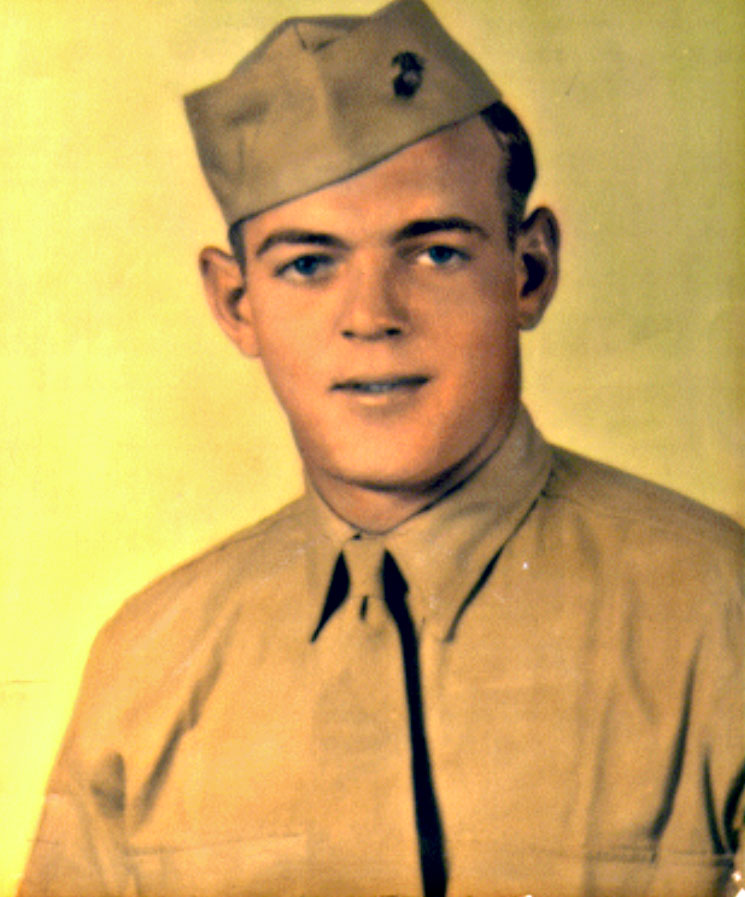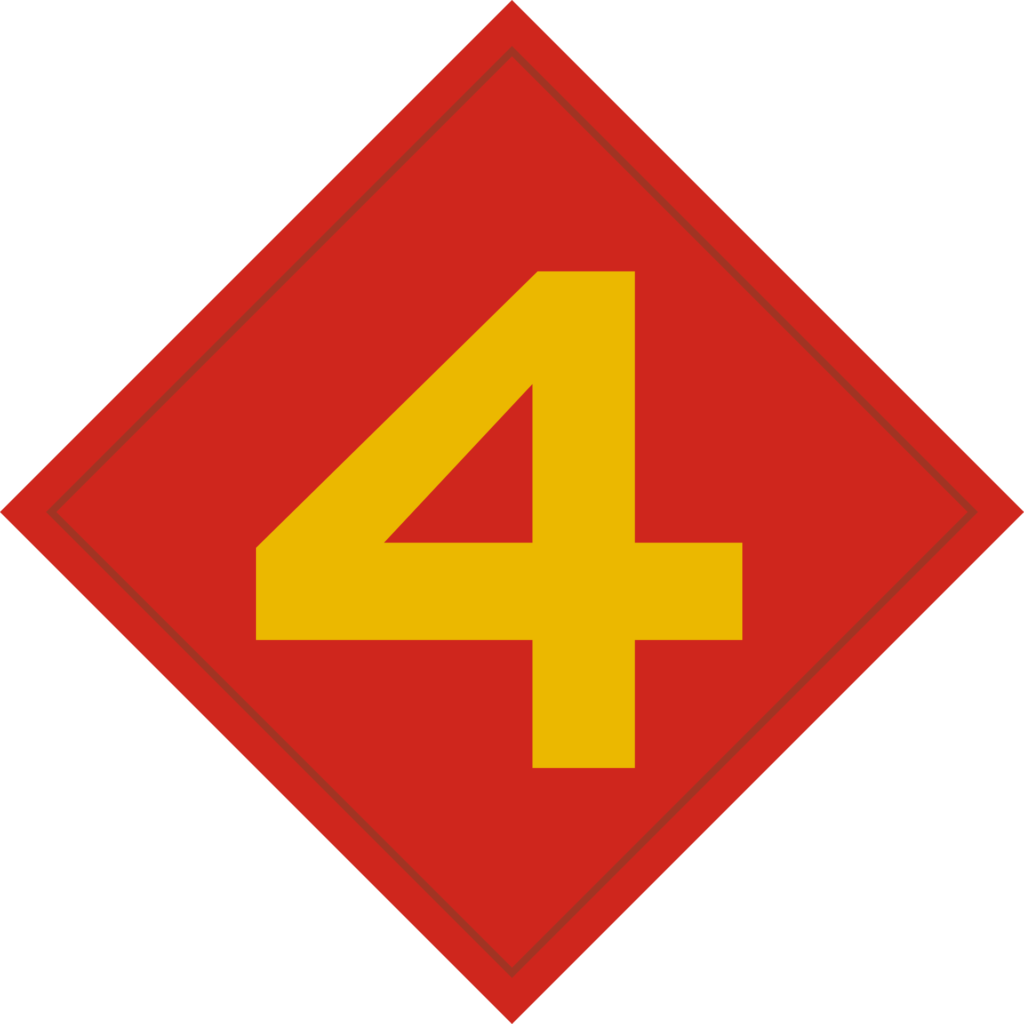
Euton Boyd Anderson (2 Oct 1923 – 11 Sept 1974), the son of Edward F. and Virgie Boyd Anderson of Burlison, enlisted in the U. S. Marine Corps at Nashville, Tennessee, on Oct. 29, 1943. He served in the Asiatic-Pacific Theater during World War II from Feb. 12, 1944 until Oct. 18, 1945.
As a member of 4th Marine Division, Private First Class Anderson participated in four major amphibious assaults in a space of 18 months. While attached to Headquarters Company, Second Battalion 20th Marines (Engineer) 4th Marine Division and 4th Pioneer Battalion, 4th Marine Division, Anderson saw heavy combat participating in the battles of Saipan (June 15 – July 24, 1944), Tinian (July 24 – August 5, 1944), and Iwo Jima (February 19 – 16 March 1945).
Private First Class Euton B. Anderson was honorably discharged on January 10, 1946, from Marine Barracks, U.S. Naval Ammunition Depot, Charleston, South Carolina.
He returned to Tipton County after he left the service and married Mary Jane McLester on Dec. 28, 1947.
The Fighting Fourth of WWII

In January 1944 the 4th Marine Division sailed from San Diego for the Marshall Islands, Roi-Namur in the Kwajalein Atoll. Operation “Flintlock” was the first objective for the Division. Four hours after the division landed, the 4th was 2/3 across the island, and Richard B. Anderson gave his life on his first day of combat. Six hours after landing on 1 February 1944 Roi Island was declared secured, and Namur Island was secured just 24 hours and 15 minutes after the first troops landed.
The Division set three new records on its first operation: [1] It became the first Division to go directly into combat from the States; [2] It was the first to capture Japanese mandated territory in the Pacific; [3] And it secured its objective in a shorter time than any other important operation since the attack on Pearl Harbor.
The Division landed on Saipan 15 June 1944. The severity of this battle was indicated by the 2,000 casualties suffered in the first two days of battle. The Flag was raised on Saipan after 25 grueling and bitter days of combat. The Division sustained 5,981 casualties killed, wounded and missing. This represented 27.6 percent of the Division’s strength. The Japanese count was 23,811 known dead and 1,810 prisoners were taken.
The Division landed on Tinian 24 July 1944. The island was defended by 9000 plus Japanese troops. This battle lasted nine days. The land assault on Tinian had cost the Division 290 men killed, 1,515 woulded and 24 missing in action. Approximately 9,000 Japanese troops were dead and 250 prisoners taken. In recognition of its work on Saipan and Tinian, the Fourth Division was awarded the Presidential Unit Citation.
Iwo Jima was the next destination for the Division. The Japanese troops on Iwo Jima numbered 23,000. The first wave of Marines hit the beach at 0902 on 19 February 1945. By the end of the second day casualties totaled 2,011. At 1800 on 16 March, 26 days and 9 hours after the first troops landed, Iwo Jima was declared secured. The greatest battle in Marine Corps History was over. The 4th Marine Division paid a heavy price. Casualties numbered 9,098 which was almost half the division strength. An estimated 22,000 Japanese had been killed by the three Divisions (Third, Fourth, and Fifth, 8,982 having been counted in the Fourth’s zone. Only 44 prisoners were taken by the Divison.
The combat record of this Division in World War II was exemplary. In the short space of one year and 19 days it participated in four major amphibious assaults and won two Presidential Unit Citations. The Division suffered a total of 17,722 battle casualties during the four assault landings on Roi-Namur, Saipan, Tinian and Iwo Jima. (14,424 wounded and 3,298 killed or died of wounds.) http://www.vietnamproject.ttu.edu/dd786/fourth.html

